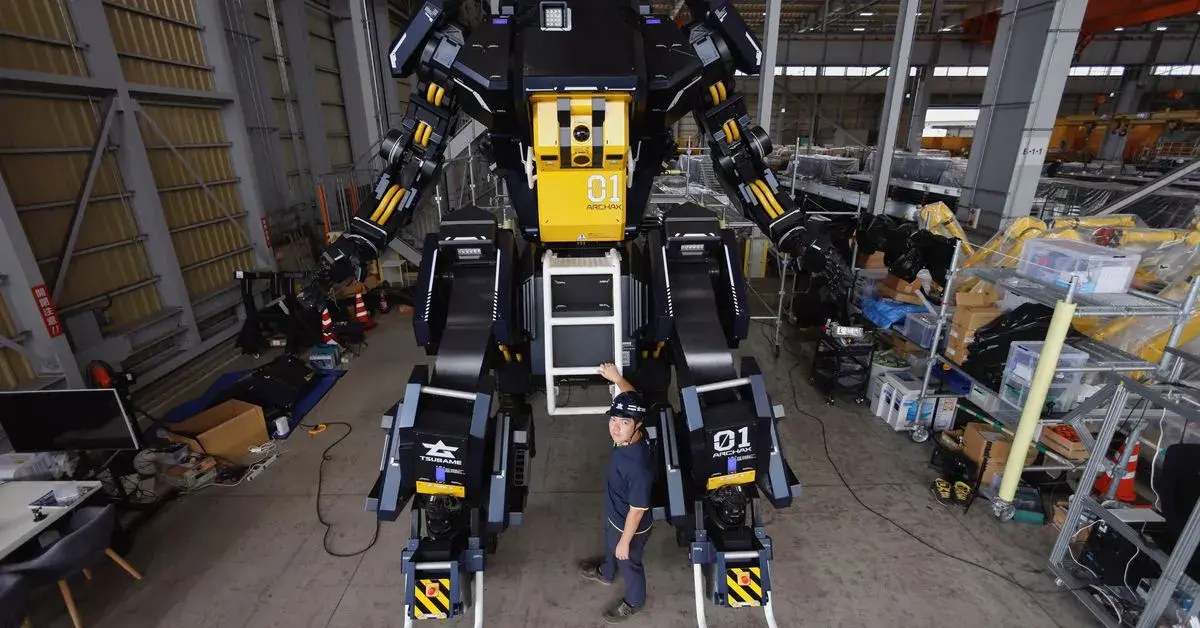- cross-posted to:
- worldnews@lemmy.ml
- technology@lemmy.ml
- cross-posted to:
- worldnews@lemmy.ml
- technology@lemmy.ml
Hot take: this thing looks easier to park than most SUVs/4WDs out there
Why make it legged and then make it move on wheels? Doesn’t seem very robotic or futuristic to me. Just a fancy car with a gundam aesthetic
Legs because that’s what a gundam has and literally no other reason. This way the creator can pretend he’s made a robot suit.
Wheels because mechanical legs that imitate human movement are wildly impractical and fragile. Humanoid robots are basically pointless, a lot of mechanical complexity with no practical benefit.
Well yes, but it seems a giant robot battlesuit is already pretty impractical, and the one big selling point is that it’s a giant robot battlesuit, and not a puppet on wheels for three million.
I haven’t seen that much Gundam, but I think most/all Gundam have wheels in addition to legs. I guess it’s the best of both worlds. Wheels are best for even terrain, and legs enable traversal of uneven terrain and jumping. In fiction of course. In real life, we can’t build anything that complicated.
As usual its just another shell on wheels. Nothing revolutionary here, just seems like another art project.
I like the wishes of the creators saying they want to be used for good causes, but we all know the true case of these types of machines, military, which is exactly what gundam is.
This is just an ad for a guys project to make himself money. These things are useless.
No military would take this thing, it’s a joke project, a pipe dream.
Get in on the ground floor! These are selling like hotcakes
Really don’t think it was made to be useful or practical in any way, just seems like some dude making shit that looks cool for funsies and trying to fund it, plus i mean its culturally relevant and stuff like that is in tons of media
Currently, the Kuratas is not capable of walking, but is able to drive forward and backwards on its four wheels at around 10 km/h. It cannot turn without external assistance.
As of 25 April 2013, Kuratas has a price of US$1,353,500 (¥134,555,495, or €1,040,976).
If you look up “boondoggle” there’s a just a picture of this thing.
The price caught my eye. They are now offering it at over twice the price. Inflation, or improved performance?
This is a different, earlier project. Looks like they basically went the same route with the design after realizing that actual walking legs are impractical.
I suspect this new company will go the same way as the previous one. I wouldn’t buy stock.
🤖 I’m a bot that provides automatic summaries for articles:
Click here to see the summary
YOKOHAMA, Japan, Oct 2 (Reuters) - Tokyo-based start-up Tsubame Industries has developed a 4.5-metre-tall (14.8-feet), four-wheeled robot that looks like “Mobile Suit Gundam” from the wildly popular Japanese animation series, and it can be yours for $3 million.
Called ARCHAX after the avian dinosaur archaeopteryx, the robot has cockpit monitors that receive images from cameras hooked up to the exterior so that the pilot can manoeuvre the arms and hands with joysticks from inside its torso.
“Japan is very good at animation, games, robots and automobiles so I thought it would be great if I could create a product that compressed all these elements into one,” said Ryo Yoshida, the 25-year-old chief executive of Tsubame Industries.
Yoshida plans to build and sell five of the machines for the well-heeled robot fan, but hopes the robot could one day be used for disaster relief or in the space industry.
Yoshida became interested in manufacturing at an early age, learning how to weld at his grandfather’s ironworks and then going on to found a company that produces myoelectric prosthetic hands.
He said he is eager to keep Japan’s competitive edge in manufacturing alive.
Saved 28% of original text.





